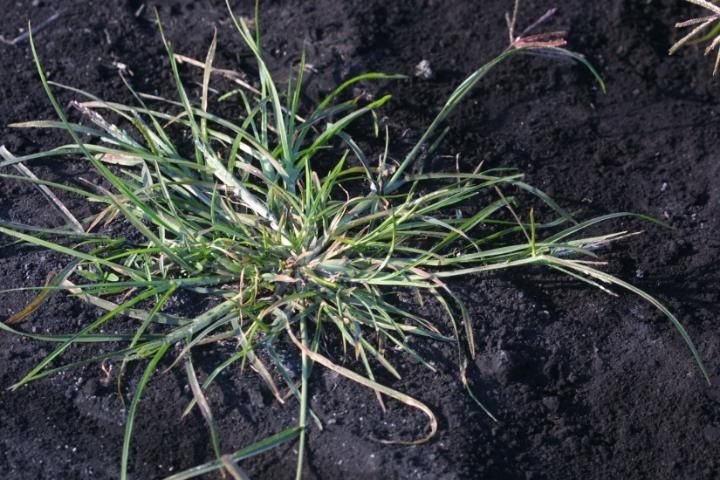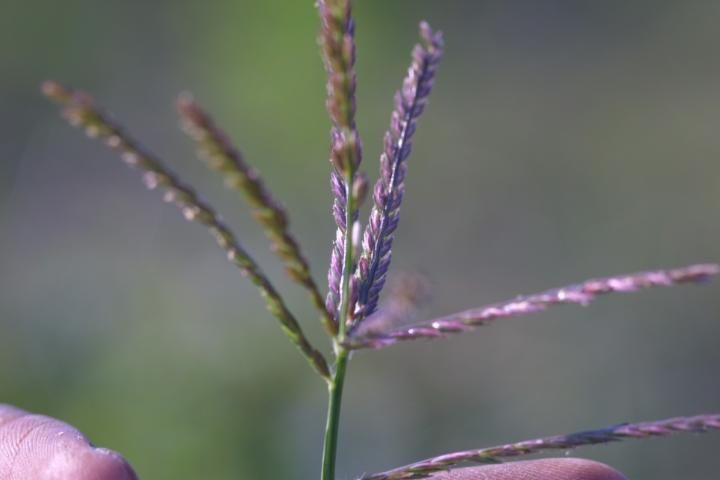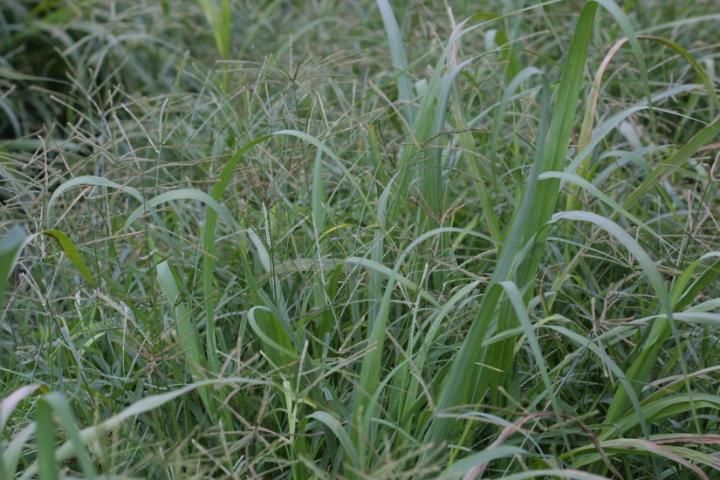Goosegrass (Eleusine indica), also referred to as white crabgrass, wiregrass, bullgrass, or silver crabgrass, is an important weed species in sugarcane (SWSS 1993). Originally native to Eurasia, goosegrass is widely distributed in the United States from Massachusetts to South Dakota and Kansas south to Florida and Texas and also along the west coast. It is also widespread in Florida, where it is commonly found in cultivated fields, turf, pastures, landscapes, orchards, roadsides, and other disturbed sites. Goosegrass is found year-round in southern Florida and is commonly associated with newly planted and stubble (ratoon) sugarcane fields.
Biology and Life Cycle
Goosegrass is an annual plant that produces a prostrate, mat-like rosette with flattened stems radiating from a central point (Figure 1). It is often described as looking like someone has stepped in the middle of the plant, flattening it out. Because of the whitish to translucent color of the leaf sheath margins, goosegrass usually appears white to silver; this is why it is known as white or silver crabgrass. It germinates when soil temperatures are above 65°F (Chauhan and Johnson 2008) and can grow from 4 inches up to 3 feet tall (Uva, Neil, and DiTomaso 1997). Seedling emergence is greatest for seeds on the soil surface and declines as depth of burial increases. Germination completely ceases if seeds are buried deeper than 3 inches (Chauhan and Johnson 2008).

Credit: D. C. Odero, UF/IFAS
Seedling
The first leaf blade is usually 3–5 times longer than it is wide, and it will open parallel to the ground. The leaves are folded in the bud and have a fringed, membranous ligule. The white to translucent leaf sheath margins are broad, smooth, and flattened.
Mature Plant
The leaf blade is flat or folded and can grow 2–8 inches long by 1/13–1/3-inch wide. Leaf blades are mostly hairless except for occasional sparse long hairs on the upper surface near the base. The ligule is membranous and uneven. Leaf sheaths are flattened, smooth to sparsely hairy toward the ligule, and whitish at the base. The seedhead consists of 2–13 fingerlike spikes, which can be 2–6 inches long and 1/10–1/3-inch wide at the top of stems (Figure 2). Usually one spike is below the others, which are bunched toward the tip. On the underside of each spike, there are two rows of 3–6 seeds, which are brown to black and 1/13-inch long. Goosegrass has a fibrous root system and never roots at the nodes.

Credit: D. C. Odero, UF/IFAS
Control
Goosegrass is not highly competitive with sugarcane; however, severe infestations caused by a poor sugarcane stand or poor control measures can result in sugarcane yield losses (Figure 3). Goosegrass can be controlled with preemergence and postemergence herbicides (Table 1). Tillage and appropriate weed control during fallow periods can also successfully reduce goosegrass populations in sugarcane.

Credit: D. C. Odero, UF/IFAS
References
Chauhan, B. S., and D. E. Johnson. 2008. "Germination Ecology of Goosegrass (Eleusine indica): An Important Grass Weed of Rainfed Rice." Weed Science 56:699–706.
Southern Weed Science Society (SWSS). 1993. Weed Identification Guide. Champaign: Southern Weed Science Society.
Uva, R. H., J. C. Neil, and J. M. DiTomaso. 1997. Weeds of the Northeast. Ithaca: Cornell University Press.